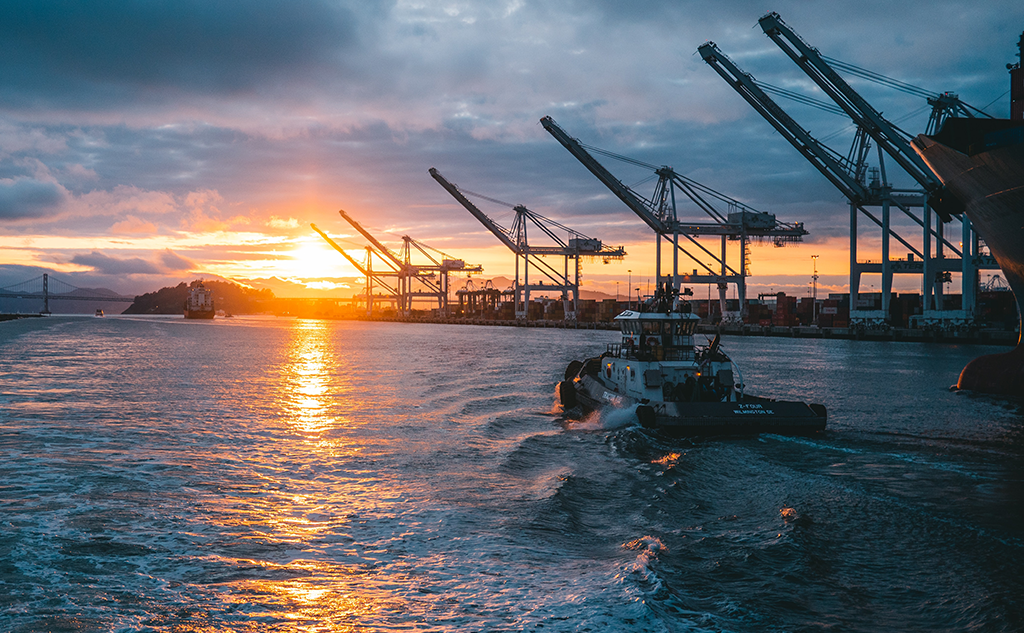With our ports already making good progress with ecological transition (reducing GHGs, regional industrial ecology, organising industrial and logistical activities, collecting, sorting and recycling waste, producing and using renewable energies and hydrogen, etc.) and with digital transition, what is their policy for adapting to the increasingly tangible effects of climate change?
A strategic interconnection with the rest of the world
Ports provide a vital link between economies. They are simultaneously embedded in their own region and connected with the rest of the world. Over 80% of today’s global trade is carried by sea and, according to Cerema, freight passing through ports is expected to increase by 50% by 2050. Europe has almost 1,200 ports, mainland France and its overseas territories accounting for around sixty of these. They include nine major maritime ports, one inland port and three autonomous ports.
The main effects of climate change on ports
Ports and port areas are facing three major developments caused or exacerbated by climate change: rising sea levels, the frequency and intensity of storms, and changing river flows. Extremely intense rainfall and storms can make it impossible for ships to dock, place greater demand on port structures such as seawalls, produce flooding and even, on occasion, lead to complete closure of the port. Droughts and heat waves can alter the hydro-sedimentary dynamics of estuaries, rendering certain sections of rivers impassable, and also causing pollution due to greater concentration of pollutants when water levels are low. Not to mention the impacts of coastal erosion and potential changes in the distribution of certain species, particularly in wetlands or alluvial plains.
Occasional and slow-onset risks
The crux of the problem lies in being able to prevent both occasional risks – such as storms – so that the most appropriate risk mitigation measures can be implemented and slow-onset risks such as those linked to the various processes resulting from increasing temperatures (rising sea levels, ocean acidification, salinisation, etc.). This is essential to the ability to plan long-term measures that can be implemented to help both contain risks, and strengthen resilience.
What actions must be taken?
Above all, current and potential risks must be assessed and modelled. It is also important to identify which infrastructures and related activities will be affected and assess the extent to which they are vulnerable. Ports in the Netherlands and two ports in California (Long Beach and San Diego) have made particularly good progress in this regard, having suffered significant material damage and disruption to their activity following particularly extreme events. France was severely affected by Cyclone Xynthia, which saw a series of violent winds, storm surges, increased tidal ranges and high seas, causing large-scale marine submersion.
In France, the third National Adaptation Plan for Climate Change (PNACC) is expected to be published by the end of 2023, and studies to determine the resilience of port infrastructure to climate change will be undertaken port by port. This is with a view to gaining better understanding of the impacts on infrastructure, corrective measures, warning systems, and the organisation of emergency services, together with dredging needs and the organising of the resumption of port activity. For example, having prioritised the risks, the port of Bordeaux has developed a risk analysis methodology (see box). The port of Le Havre performed a statistical analysis of water levels and created a digital model of marine submersion to illustrate the flood risk in the area. Ports in the Loire estuary (including Nantes Saint-Nazaire) are taking part in the “Consequences of Climate Change on Estuary Eco-geomorphology” (C3E2) research programme, which pays particular attention to changes in the physical and chemical parameters of the water, increase in salt and fluid mud, and the frequency of submersion.
What are the risks for Bordeaux’s major maritime port?
Between 2019–2022, the port of Bordeaux took part in the Ecclipse project along with the ports of Valencia (Spain) and Aveiro (Portugal), with a view to analysing the impact of climate change on these ports and developing prevention strategies and action plans to help mitigate the effects. Supported by Cerema, the major maritime port in Bordeaux ranked its risks with the top two being degradation caused by submersion and flooding, and changes stemming from rising sea levels and low flow in the Garonne and Dordogne. Other risks identified include the health and economic impact of heat waves (the management of work, water salinity), longer periods of low water (necessitating dredging and its impact on the surrounding environment), and other impacts on infrastructure and the deterioration of natural and agricultural habitats.
No single solution
There is no single solution when planning the adaptation of ports to climate change. While technical approaches and technology have a part to play, we must also understand the social, institutional and ecosystem mechanisms involved. Human resources for example are pivotal (e.g. skills, training). In other words, adaptation has both structural and non-structural aspects to consider.
Factoring-in the future climate
Collecting data, mapping submersion risks, raising awareness as widely as possible (stakeholders and users of port areas, and the residents of “port towns”) about the potential risks, and producing prevention plans are fundamental. It is however also important to ensure that any measures or regulations put in place to cater for the development needs of an area (new port works or modifications) are with an eye on climate change. Given the extent of the uncertainties surrounding the subject however, this is certainly more easily said than done.
Learn More : A busy summer for the maritime ecological transition




